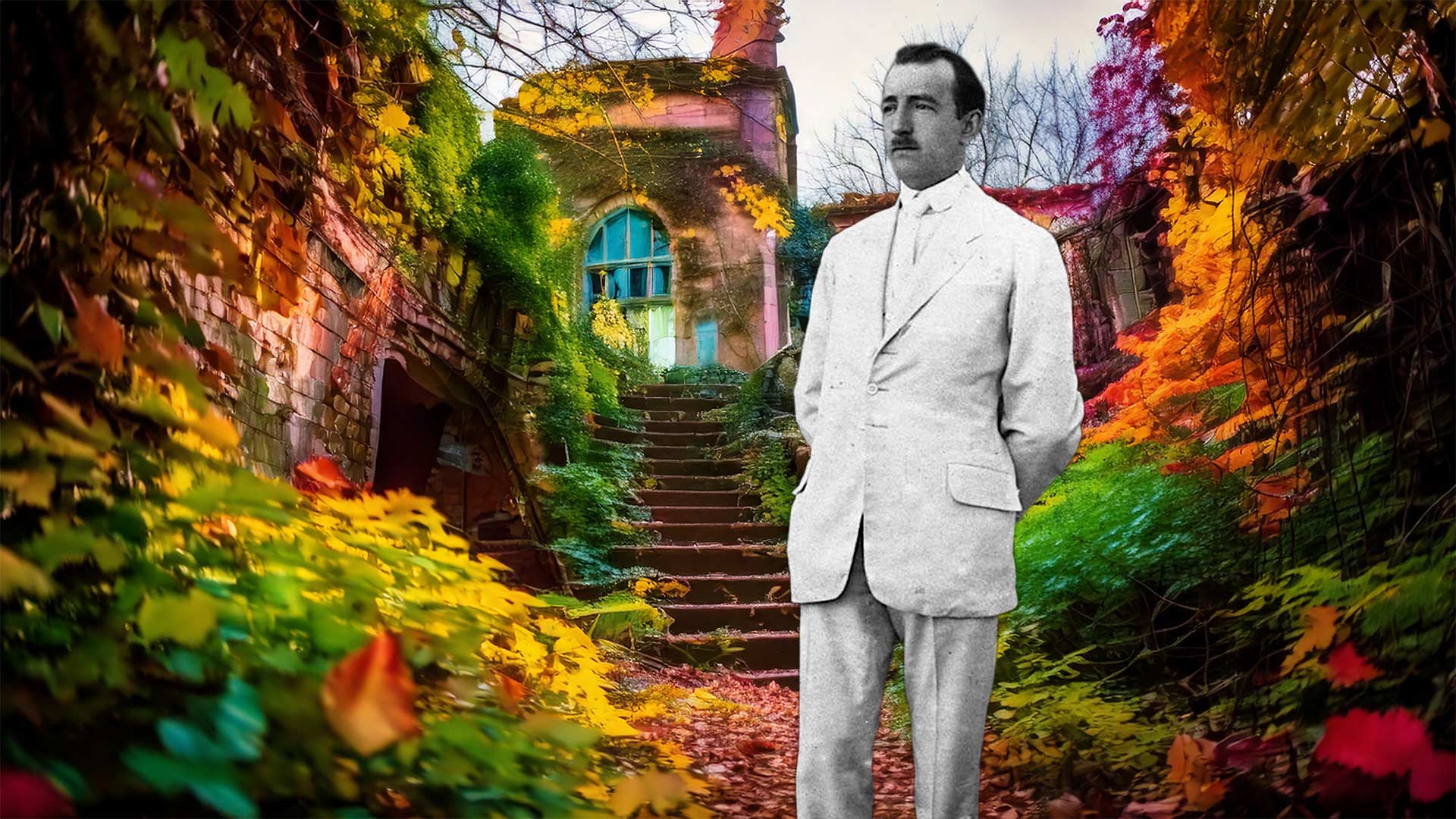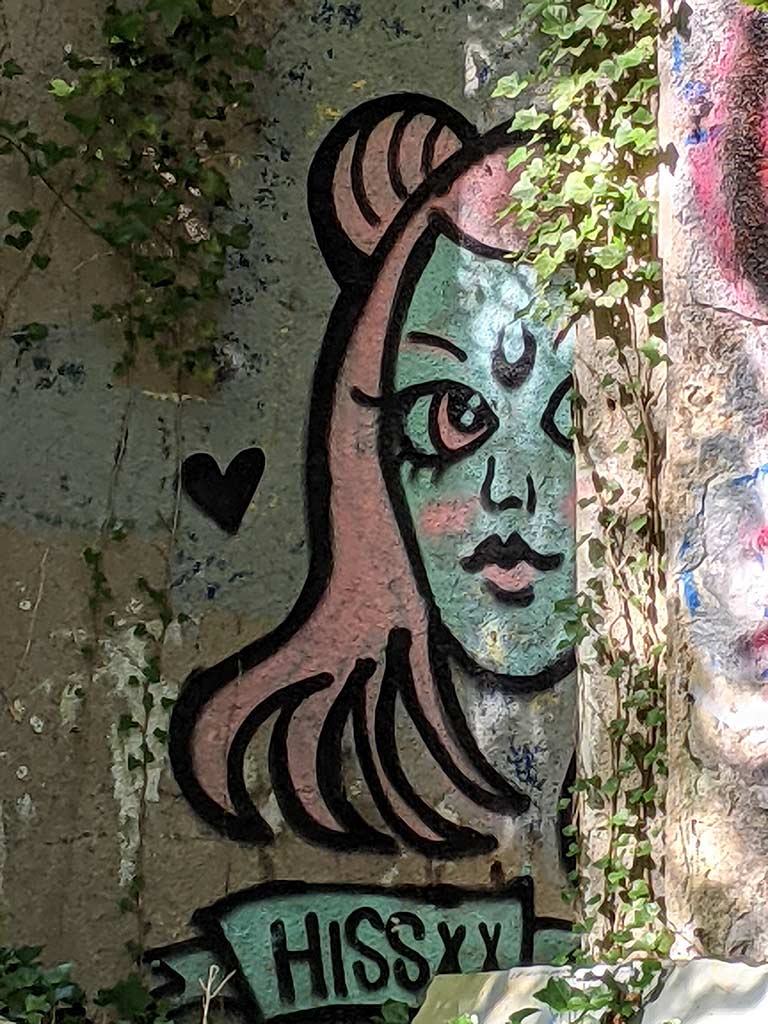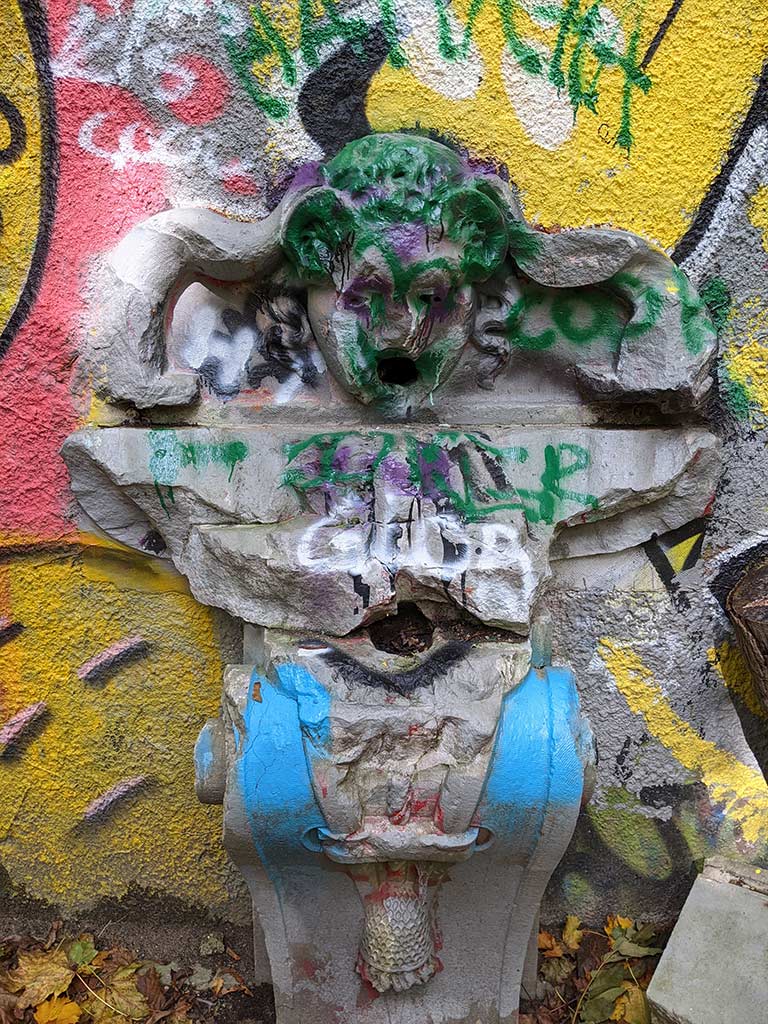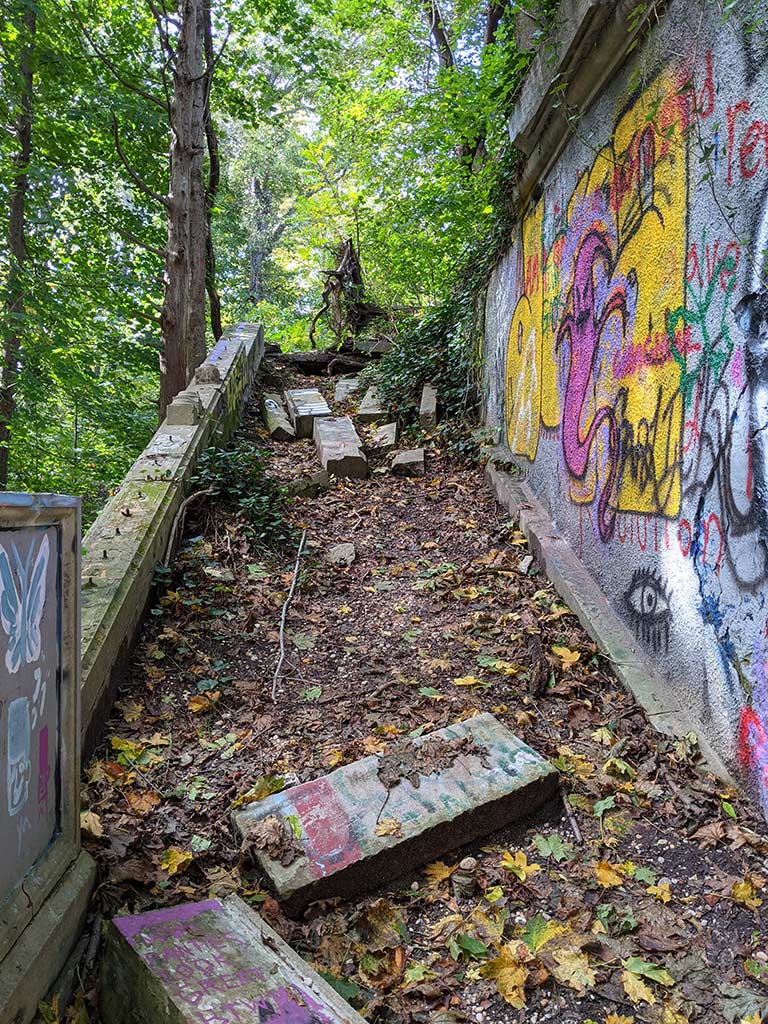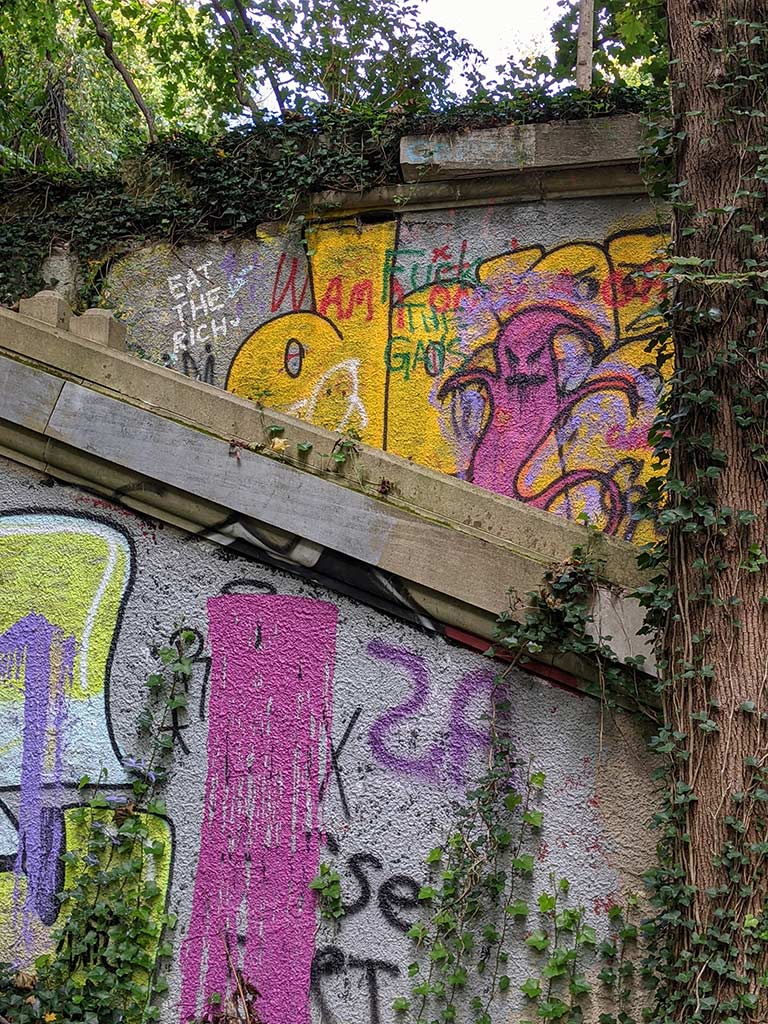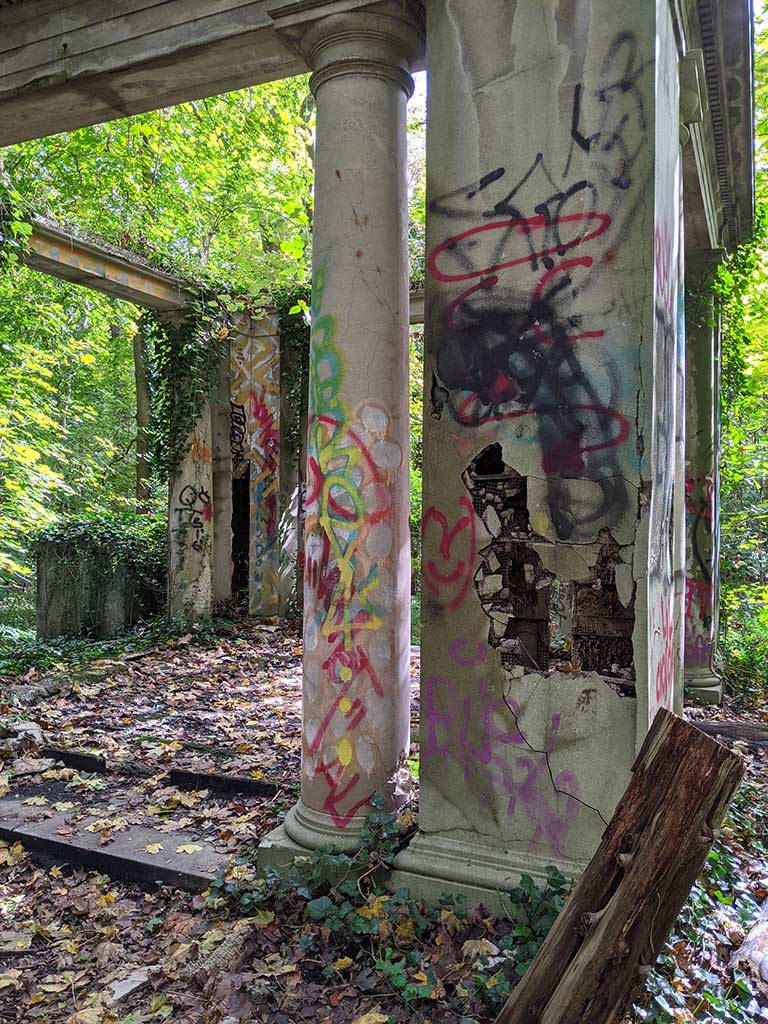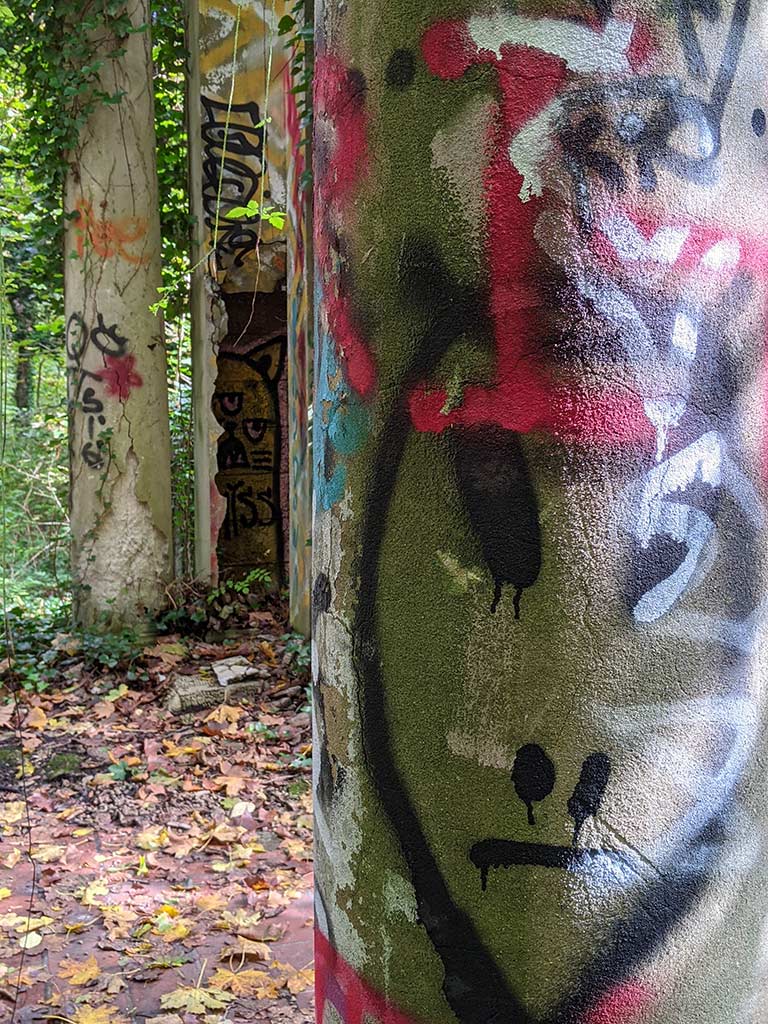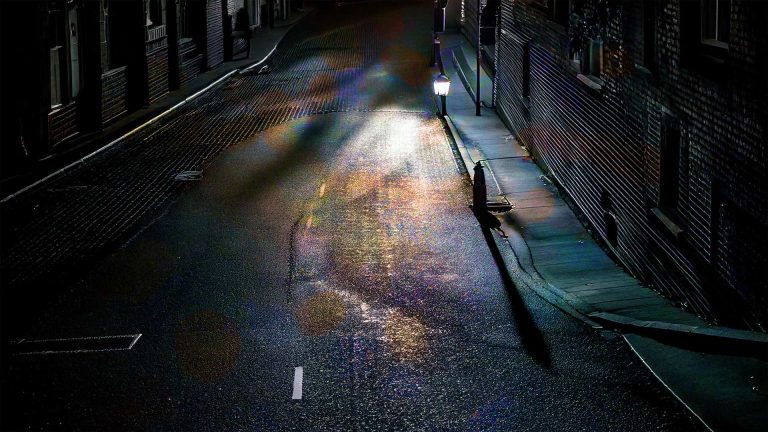Read time 2 minutes 30 seconds
ucked away in the tranquil Muttontown Preserve of East Norwich, New York, hidden deep within a network of winding trails, lies a mysterious relic of the past—a graffitied staircase leading to nowhere. This crumbling structure is one of the last remnants of the once-magnificent Knollwood Estate, a grand neoclassical mansion that was built in 1906 for Wall Street tycoon Charles Hudson.
A visit to the site in 2021 revealed that these ruins have been transformed into an evocative art installation, with vibrant graffiti by Queens-based artist and illustrator Hiss XX, adding a contemporary twist to this once-opulent, now-forgotten estate.
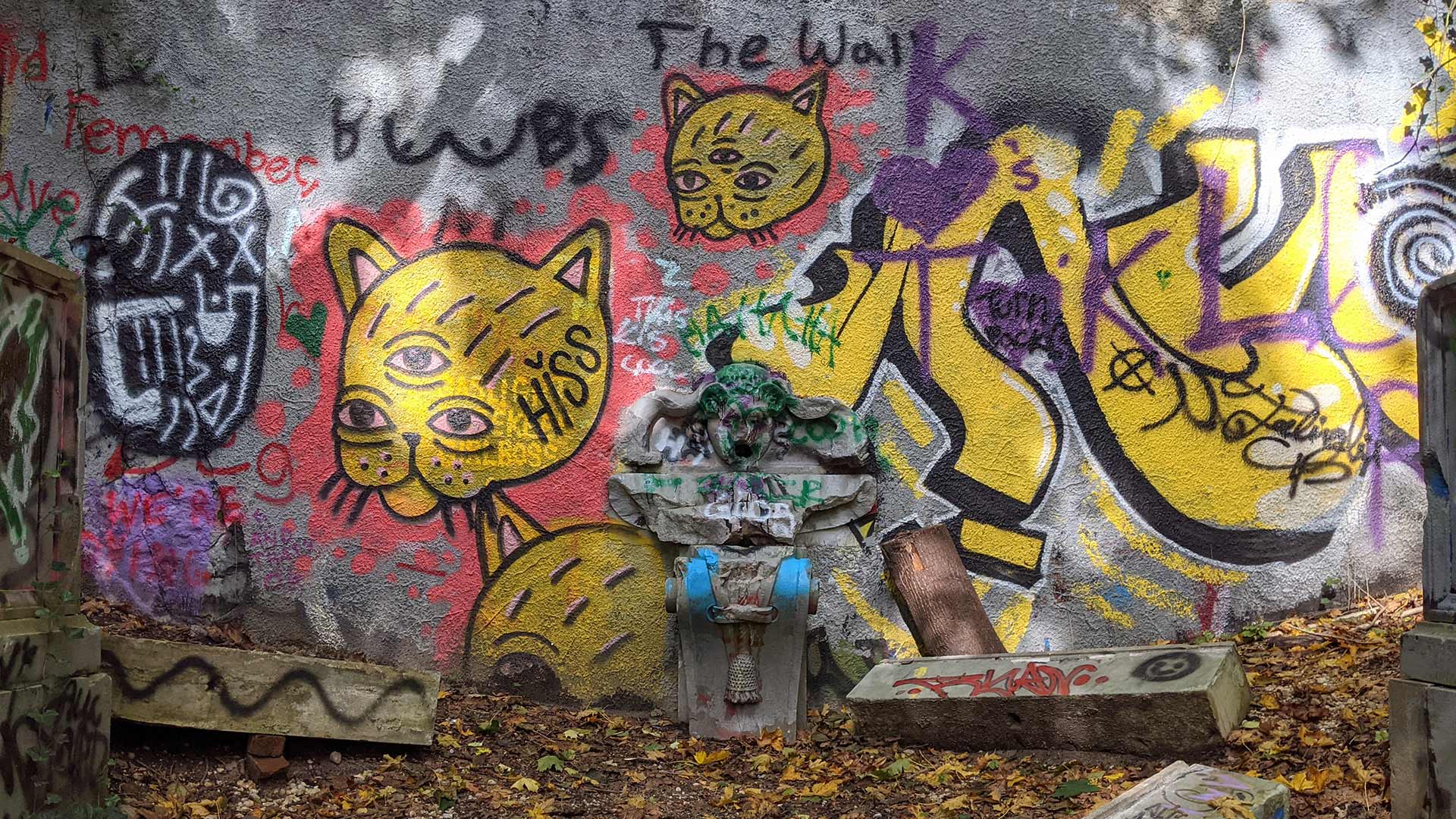
Locals know it by a different name: King Zog’s Castle. The “king” in question is Zog I of Albania, who, despite being exiled from his homeland, owned the estate for a time in the 1950s, leaving behind a rich history tied to the estate’s enigmatic legacy. The echoes of King Zog’s legacy continue to captivate those who venture into this forgotten corner of history.
Who exactly was King Zog?
Ahmet Muhtar Bej Zogolli, more commonly known as Zog I, ruled Albania from 1922 to 1939. After being overthrown by Mussolini, Zog fled to England and eventually made plans to relocate to the United States. Born into an affluent family in northern Albania, Zog’s rise to power came through both strategic alliances and sheer ambition. By 1923, after surviving an assassination attempt, he returned to Albania with the help of foreign troops and became Prime Minister.
Zog’s reign was marked by autocratic rule. With the constitution granting him sweeping powers, including the ability to appoint one-third of the upper house, he wielded near dictatorial control, with strict media censorship and the elimination of political opponents. In 1928, he declared himself King of the Albanians, officially taking the title King Zog I.In 1951, Zog purchased the 260-acre Knollwood Estate, originally designed by architects Hiss and Weekes for Charles Hudson. The sprawling mansion boasted 60 rooms and sat on the grounds of the former Westbrook Farms. Though Zog had grand plans to move in with his staff, he never did. The estate quickly became the stuff of legend, with rumors swirling that the king had hidden his wealth within the walls. These rumors attracted looters, and the once-stunning mansion was soon ransacked, falling into disrepair. In 1955, the Albanian Parliament sold the property, and by 1959, safety concerns led to its demolition.
King Zog, who never saw the estate’s completion, outlived Knollwood by only two years, passing away in Paris in 1961.
Today, all that remains of the Knollwood Estate are ruins—decaying remnants nestled in the Muttontown Preserve. While exploring the trails, visitors can discover fragments of the mansion’s former glory, including crumbling garden walls, abandoned staircases, and a few standing gazebos.
